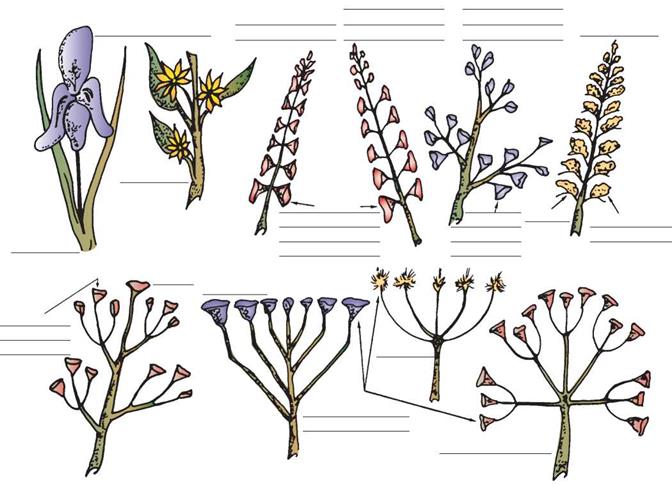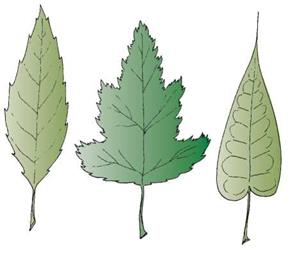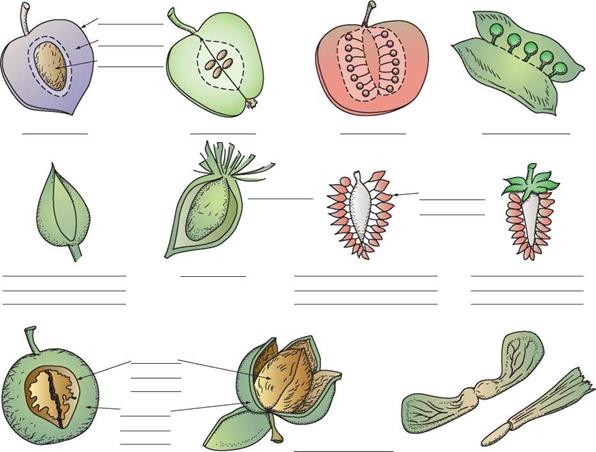By now, the assimilation of terminology may be weighing heavily on you. Rather than being put off by all of the new words, regard them as a new language, as an expansion of your existing knowledge. Like any new words, they are best learned and understood through repeated use. Obtaining a good plant key and a supply of unknown plants, then identifying one from the other, is the best means of learning the many terms. What begins as memorization can become permanent knowledge if approached properly.
SUMMARY______________________________________
The systematic classification of plants is termed taxonomy. Taxonomy provides each plant in nature with a binomial scientific name composed of the genus and species to which it belongs. While many plants have common names as well, the scientific binomial identifies the plant worldwide.
In addition to their botanical classification, plants are commonly grouped into assorted other categories based on their physical appearance rather than their genetic relationships. For example, plants may be categorized as:
• woody or herbaceous
• evergreen, deciduous, or semievergreen
• trees, shrubs, vines, or groundcovers
• annuals, perennials, or biennials
• hardy or tender
• nursery or greenhouse crops
• bedding or foliage plants
• native, exotic, or naturalized
• aquatic
• specimen or accent
• wildflowers
• endangered, threatened, or rare
Plants may also be described by their hardiness zone or heat zone tolerances.
Unknown plants can be identified by using a dichotomous analytical key. Hundreds of keys exist, some dealing with a limited group of plants, others more encompassing. All require the searcher to choose the plant’s identifying features from among a series of couplets. Use of the keys requires that the searcher know the terminology used to describe leaves, twigs, flowers, and fruits.
Leaves are described in terms of their shapes, margins, lobing, bases, vein patterns, apex styles, surface pubescence, and whether they are simple or compound. Twigs are described on the basis of their bud types, terminal buds, bud and leaf arrangements, petiole scar shapes, prominence of their lenticels and stipule scars, and type of pith. Flowers
are described by the position of the ovary in relation to the flower parts, or by the arrangement of flowers on the stem. Fruit are described as simple, aggregate, multiple, or accessory depending on the number of flowers and ovaries involved in their formation.
ACHIEVEMENT REVIEW
A. SHORT ANSWER
1. For each of the following statements, list
the word that will complete it correctly.
a. The systematic classification of plants
is called______ .
b. Botanists specializing in plant
classification and relationships are called.
c. The two-part scientific name of a plant
is called a_____ .
d. Every plant derives its scientific name
from its genus and______ .
e. A plant species that is at risk for being endangered is currently listed as
f. Every plant has only scientific
name.
g. A plant that is uncommon and
possessing unusual qualities is described as.
h. The father of taxonomy is_____ .
i. The colder five degrees of a hardiness
zone is in the _____ subzone.
j. A heat day is one in which the
temperature exceeds ____ degrees
Fahrenheit.
2. Explain the differences between the
following types of plants:
a. woody and herbaceous plants
b. evergreen and deciduous plants
c. trees and shrubs
d. vines and groundcovers
e. annuals and perennials
f. biennials and perennials
g. hardy and tender plants
h. bedding plants and foliage plants
i. native and exotic plants
j. naturalized and exotic plants
k. specimen and accent plants
3. Label these three types of leaves and the type of apex, base, and margin of each.
|
|
|

|

6. From the definitions that follow, list the
correct terms.
a. a flower that has an inferior ovary with a floral tube united with the wall of the ovary
b. a flower that has a superior ovary and a floral tube separated from the ovary
c. a flower that has a superior ovary and no floral tube
d. a flower having only one blossom per stem
e. a flower head composed of many small ray and disc flowers
f. a fruit that develops from a single ovary
g. a fruit that develops from a single flower having a group of ovaries
h. a fruit that develops from one or more ovaries and includes the calyx and/or receptacle
i. a fruit that develops from multiple ovaries of multiple flowers borne on a single stalk
j. the innermost part of the pericarp
k. the outermost part of the pericarp
l. the central part of the pericarp
|





